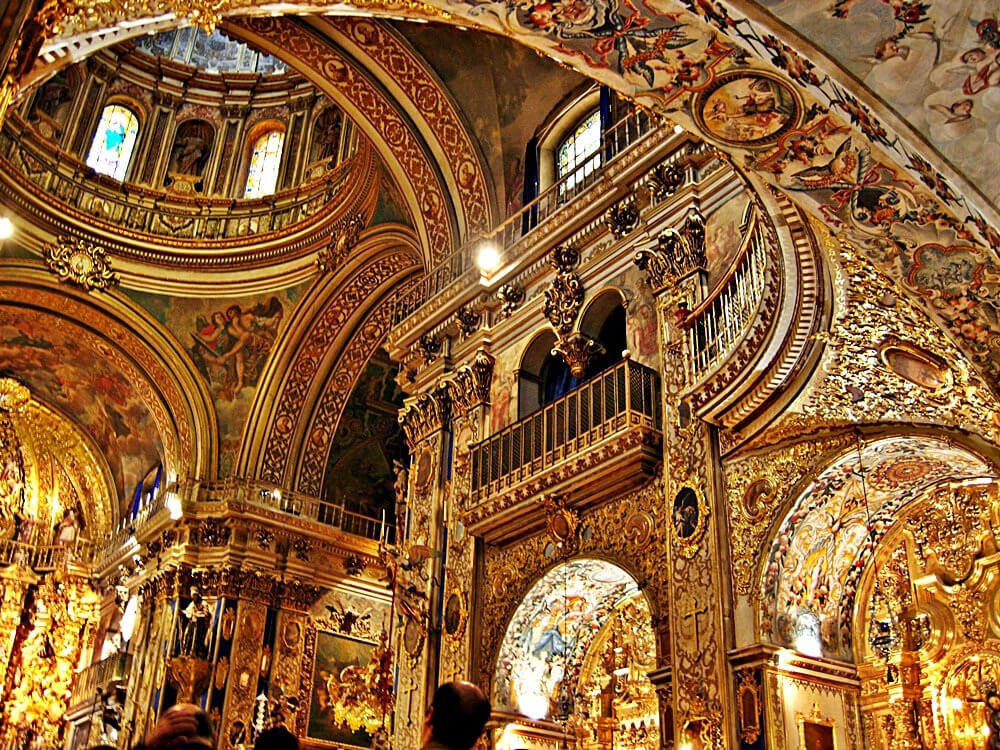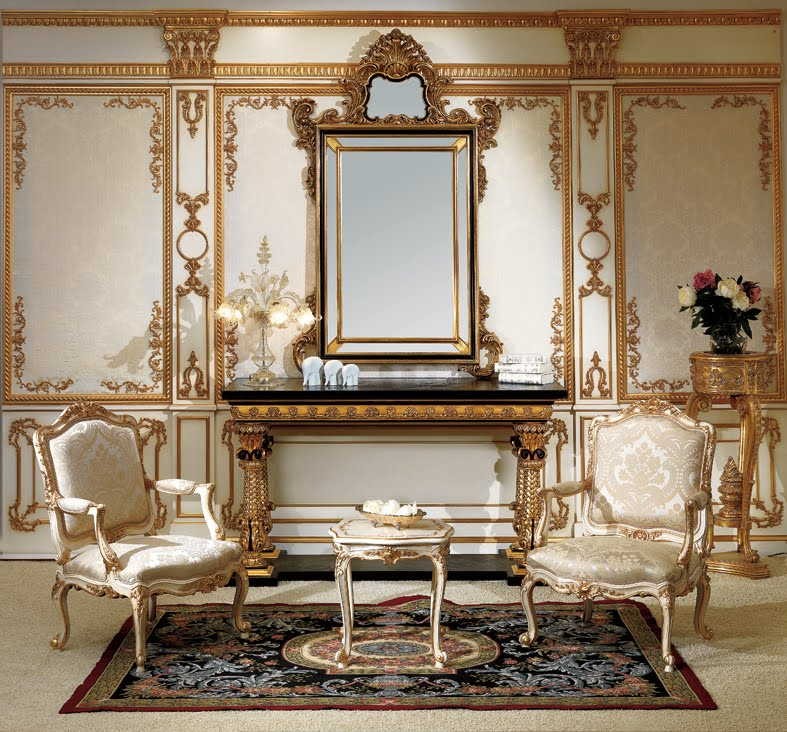Table Of Content

The development of 17th-century landscape painting, in which humans are frequently portrayed as minute figures in a vast natural setting, is indicative of this changing awareness of the human condition. The term Baroque probably ultimately derived from the Italian word barocco, which philosophers used during the Middle Ages to describe an obstacle in schematic logic. Another possible source is the Portuguese word barroco (Spanish barrueco), used to describe an irregular or imperfectly shaped pearl, and this usage still survives in the jeweler’s term baroque pearl. The best known German playwright was Andreas Gryphius, who used the Jesuit model of the Dutch Joost van den Vondel and Pierre Corneille.
The Baroque style
Some of the earliest completed works in the Baroque period were the Church of Gesu, in 1584, and the facade of St. Peter’s Basilica, designed in 1612. As the style took hold, it wasn’t just churches that were crafted in the aesthetic, but secular buildings too. One of the most famous examples of this—commissioned by Louis XIV of France—is the Palace of Versailles. The most ornamental and lavishly decorated architecture of the Spanish Baroque is called Churrigueresque style, named after the brothers Churriguera, who worked primarily in Salamanca and Madrid. Their works include the buildings on the city's main square, the Plaza Mayor of Salamanca (1729).[40] This highly ornamental Baroque style was influential in many churches and cathedrals built by the Spanish in the Americas. The Dutch Golden Age was the only example of the Baroque style employed in a Protestant area, and, as a result, took a very different approach in both architecture and painting.
Discover & Buy Contemporary Art
Twisted columns, ornate details, foreign or domestic woods, and heavy gilds of varying metals all defined baroque furniture, all put together in an effort to create a harmony of movement and singularity. Great Dutch Baroque painters included Rembrandt van Rijn, Johannes Vermeer, and Peter Paul Rubens. So great were the talents of the Dutch painters that Carl Klaus and Victoria Charles remarked ‘he [Rubens] is the only one who came near to Michelangelo in acting out drama’ and that “as a colourist, Rubens even perhaps overshadowed Michelangelo”.
Music
But in 1888 Heinrich Wölfflin's Renaissance und Barock (1888), the term was officially used as a simple descriptive to denote the distinct artistic style. Virtuoso art objects made of rare and precious materials had long been valued and kept in special rooms or cabinets, alongside natural history specimens, scientific instruments, books, documents and works of art. However, during the Baroque period, the birth of modern science and the opening up of the world beyond Europe brought an increasingly serious interest in the nature and meaning of these exotic materials. Rarities such as porcelain and lacquer from East Asia became fashionable and were imitated in Europe.
Later Developments - After Baroque Art and Architecture

Made between 1630 and 1650 in China originally as a writing-brush jar, it later had extravagant silver-gilt mounts added in London, which transformed the brush jar into a luxurious, decorative two-handled cup and cover.
Major Baroque architects and works, by country
Ribera's later work emphasized a layer of silver tones overlaid with warm golden tones as seen in his The Holy Family with St. Catherine (1648). The Baroque is a highly ornate and elaborate style of architecture, art and design that flourished in Europe in the 17th and first half of the 18th century. Originating in Italy, its influence quickly spread across Europe and it became the first visual style to have a significant worldwide impact. At the end of the interwar period, with the rise in popularity of the International Style, characterized by the complete lack of any ornamentation led to the complete abandonment of influence and revivals of the Baroque.
Italian Baroque
Baroque churches were designed with a large central space, where the worshippers could be close to the altar, with a dome or cupola high overhead, allowing light to illuminate the church below. The dome was one of the central symbolic features of Baroque architecture illustrating the union between the heavens and the earth. Quadratura paintings of Atlantes below the cornices appear to be supporting the ceiling of the church.
Urban planning and design
In contrast to the architectural emphasis on Catholic splendor, Spanish Baroque painting emphasized the limitations and suffering of human existence. It was noted for its focus on realism based upon precise observation and was less interested in theatrical effects than a compelling sense of human drama. Caravaggio was an early influence on artists like Francisco Ribalta and Jusepe Ribera, though most Spanish artists took chiaroscuro and tenebrism as a departure point and evolved their own style.
Baroque in the Spanish and Portuguese Colonial Asia
The High Baroque (1625–1675) produced major works in Rome by Pietro da Cortona, including the (Church of Santi Luca e Martina) (1635–50); by Francesco Borromini (San Carlo alle Quattro Fontane (1634–1646)); and by Gian Lorenzo Bernini (The colonnade of St. Peter's Basilica) (1656–57). Examples in France included the Pavillon de l’Horloge of the Louvre Palace by Jacques Lemercier (1624–1645), the Chapel of the Sorbonne by Jacques Lemercier (1626–35) and the Château de Maisons by François Mansart (1630–1651). The Baroque garden, also known as the jardin à la française or French formal garden, first appeared in Rome in the 16th century, and then most famously in France in the 17th century in the gardens of Vaux le Vicomte and the Palace of Versailles.
cuckoo clock springs to life amid baroque villa in dynamic NFT - Designboom
cuckoo clock springs to life amid baroque villa in dynamic NFT.
Posted: Fri, 01 Sep 2023 07:00:00 GMT [source]
His works were both religious subjects like The Immaculate Conception (1678), and genre paintings, where he often depicted street people, as in The Young Beggar (1645). His work was very popular, due to its elegance and sentimentality, and he cofounded the Seville Academy of Fine Art in 1660. After his death Juan de Valdes Leal became the leading painter of Seville, though his work focused on the dramatic such as The End of Worldly Glory (1672), an allegory of death, which made his work a kind of early precursor to Romanticism. Francisco de Zurbaran was dubbed "the Spanish Caravaggio" for his religious subjects like The House of Nazareth (1630), though his compositions were more severe and restrained and often focused on a solitary ascetic figure. The architect Giacomo Della Porta came from a family of Italian sculptors and was a student, and later collaborator of both Michelangelo and the leading Mannerist architect in Rome, Giacomo Barozzi da Vignola. He worked with Barozzi on the building of the Church of the Gesù (1584) and, following the older man's death in 1573, completed the project with a reinterpreted design.

The best way to approach the mapping of Baroque art characteristics is therefore often the interaction with specific schools, artists, and artistic mediums. Generally, the main features of Baroque painting manifestations are drama, deep colors, dramatic light, sharp shadows and dark backgrounds. While Renaissance art aimed to highlight calmness and rationality, Baroque artists emphasized stark contrasts, passion, and tension, often choosing to depict the moment preceding an event instead of its occurrence. Madame de Pompadour, one of the main figures of Rococo, commissioned the Petit Trianon, one of the most important examples of French Neoclassical architecture.


No comments:
Post a Comment